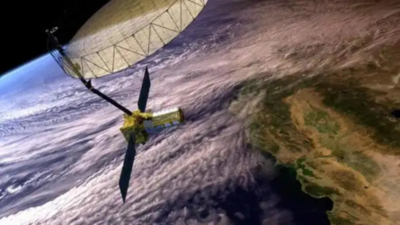New Delhi: After several postponements, the government has finally confirmed the launch of the Nisar satellite’s long wait for June 2025, which has identified a critical moment in the country’s growing space ambitions. Along with this proud achievement for the nation, another announcement was made regarding India’s upcoming participation in the AXIOM Mission 4 (AX-4).
In this historic mission, the captain of the Indian Air Force Group, Shobhanshu Shukla, will become the first Indian astronaut to visit the International Space Station (ISS) and will be the second Indian space after Rakesh Sharma.
The announcements were held during a high -level review meeting chaired by Union Minister Dr. Jitendra Singh.
The NASA-Asro synthetic aperture radar (NISAR) satellite has been developing for more than a decade. Initially, it was scheduled for the 2024 launch but due to technical issues, especially with its 12 meters radar antenna reflector failed.
The mission, which was pushed until March 2025, has now been confirmed from Sarayarikota for the June elevator on the GSLV-F-16 of ISRO.
What is the Nasser Mission?
Nasser represents an important cooperation between NASA and ISRO. This dual frequency is the first satellite with artificial aperture radars, NASA’s L El Band and ISRO’s STE band, which will allow it to monitor the changes in unprecedented precision land -level changes.
The satellite, which weighs 2.8 tonnes and costs more than Rs 5,800 crore, will scan almost all earth and ice levels every 12 days, which will provide high resolution data on natural disasters, climate change, land use and land crust movement.
The mission is not just a scientific milestone but also a geographical political. According to NASA, Nasser will provide important data for tracking natural disasters such as glaciers, forests, wet areas and earthquakes and land sliding.
Double band radar technology allows it to detect surface changes like a few centimeters, even under cloud cover or dense plants, which is ideal for the response to both research and destruction.
Satellite’s key hardware, which is jointly manufactured and integrated in India and the United States, includes a capable .No boom, radar reflectors, GPS recipients, and high -speed data communication systems. With its cloud -based data storage and open access, Neser is expected to benefit scientists and policy makers around the world.
The satellite confirmation has surfaced when India accelerates its start through the Gagganian Mission and ISS through the SIM through Exam Mission 4, which is a private mission approved by NASA by the US -based axis.
What is Axiom-4 Mission?
Before May 2025, no one was prepared, AX-4 will send Shabbathashu Shukla to the ISS to the IS-4, which is about to go into space after the first Indian and monster Sharma to arrive at the station.
Shokla will serve as AX-4 Mission Pilot under Commander Pagi Whiteson with astronauts from Poland and Hungary.
The staff will conduct more than 60 research experiments during their 14 -day stay in the ISS, including seven studies headed by NASA and ESA.
It is spread over a wide spectrum, from the study of the development of the algae in the microority to the detection of muscle damage treatment, and to analyze the genetics of flexibility in the extreme environment.
AX-4 Missions is an important moment for India’s global scientific cooperation. Emomum Space says it will be the most research mission to date, which will include 31 countries and will pave the way for microority research and land -related benefits.
Group Captain Prashant Nair has been named Shukla’s backup.



